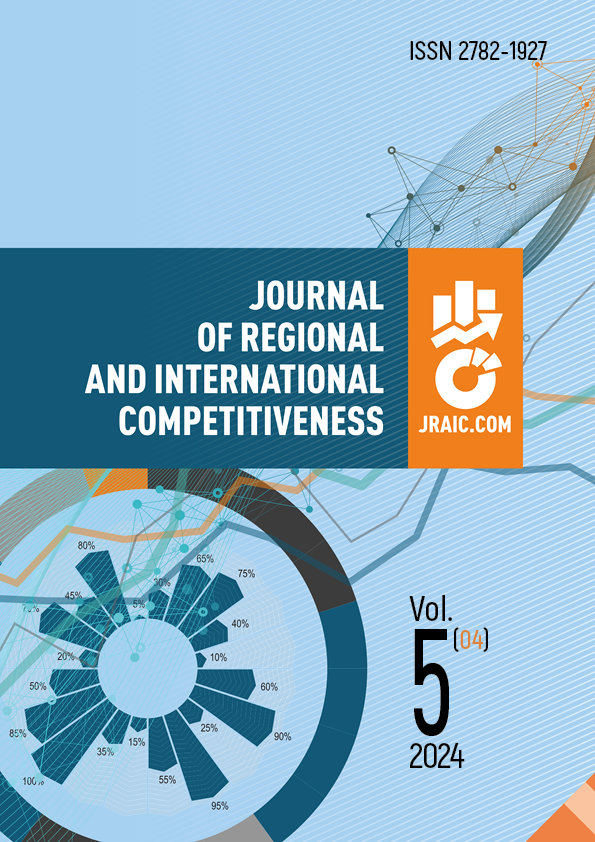Ярославль, Ярославская область, Россия
Яросавль, Ярославская область, Россия
Создание интеграционного объединения влечет за собой не только интенсификацию товарооборота между странами и устранение торговых барьеров, но и более тесную связь, в частности, между финансовыми рынками. В связи с этим интересным исследовательским вопросом является то, как интеграционные процессы в ЕАЭС влияют на связность финансовых рынков и возникает ли в рамках данного интеграционного объединения эффект финансового спилловера. Данное исследование проливает свет на взаимосвязанность финансовых рынков в ЕАЭС в долгосрочном интервале времени. С помощью корреляционного анализа проверяется гипотеза о том, что создание ЕАЭС способствовало более тесной интеграции финансовых рынков стран-участниц. Результаты исследования выявили статистически значимую связь между индексами KASE и KSE, а также между индексами KASE и РТС, но не выявили значимой корреляции между индексами KSE и РТС. Эти результаты подчеркивают различную степень финансовой взаимосвязи между странами ЕАЭС и дают представление о том, как интеграционная политика может повысить общую синхронизацию рынков.
интеграция в ЕАЭС; финансовый спилловер; корреляционный анализ; индексы РТС, KASE, KSE
1. Cotter, J., Hallam, M., & Yilmaz, K. (2023). Macro-financial spillovers. Journal of International Money and Finance, 133. https://doi.org/10.1016/j.jimonfin.2023.102824
2. Croitorov, O., Giovannini, M., Hohberger, S., Ratto, M., & Vogel, L. (2020). Financial spillover and global risk in a multi-region model of the world economy. Journal of Economic Behavior and Organization, 177, 185–218. https://doi.org/10.1016/j.jebo.2020.05.024
3. Fukuda, S. I., & Tanaka, M. (2020). Financial spillovers in Asian emerging economies. Asian Development Review, 37(1), 93–118. https://doi.org/10.1162/adev_a_00142
4. Chen, W., Hamori, S., & Kinkyo, T. (2017). Banking sector resilience to financial spillovers. Applied Economics Letters, 24(6), 422–426. https://doi.org/10.1080/13504851.2016.1200173
5. Białkowski, J., Bohl, M. T., & Serwa, D. (2006). Testing for financial spillovers in calm and turbulent periods. Quarterly Review of Economics and Finance, 46(3), 397–412. https://doi.org/10.1016/j.qref.2006.04.001
6. Feng, H., Liu, Y., Wu, J., & Guo, K. (2023). Financial market spillovers and macroeconomic shocks: Evidence from China. Research in International Business and Finance, 65. https://doi.org/10.1016/j.ribaf.2023.101961
7. Chen, S., Zhong, J., & Failler, P. (2022). Does China transmit financial cycle spillover effects to the G7 countries? Economic Research-Ekonomska Istrazivanja , 35(1), 5184–5201. https://doi.org/10.1080/1331677X.2021.2025123
8. Yildirim, Z., & Ivrendi, M. (2021). Spillovers of US unconventional monetary policy: quantitative easing, spreads, and international financial markets. Financial Innovation, 7(1). https://doi.org/10.1186/s40854-021-00299-1
9. Haddou, S. (2022). International financial stress spillovers to bank lending: Do internal characteristics matter? International Review of Financial Analysis, 83. https://doi.org/10.1016/j.irfa.2022.102289
10. Gulzar, S., Mujtaba Kayani, G., Xiaofeng, H., Ayub, U., & Rafique, A. (2019). Financial cointegration and spillover effect of global financial crisis: a study of emerging Asian financial markets. Economic Research-Ekonomska Istrazivanja, 32(1), 187–218. https://doi.org/10.1080/1331677X.2018.1550001
11. Alkan, B., & Çiçek, S. (2020). Spillover effect in financial markets in Turkey. Central Bank Review, 20(2), 53–64. https://doi.org/10.1016/j.cbrev.2020.02.003




















